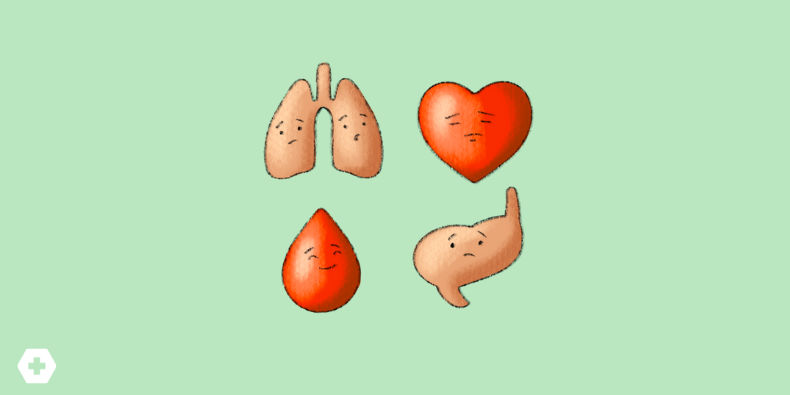
Decoding Pediatric Shock: A Primer

When it comes to managing critically ill children, recognizing and treating shock is one of the most essential—and high-stakes—skills a pediatrician can master.
Shock remains a leading cause of death and disability in children worldwide. Understanding how to identify and manage it is critical.
Let’s break down the different types of shock and clues to identify them, one by one.
What is Shock, Really?
At its core, shock is a state of cardiovascular insufficiency where oxygen and nutrients aren’t delivered to the body’s vital organs adequately.
Without intervention, cells switch from efficient aerobic energy production to the lactic-acid-generating anaerobic pathway—a fast track to organ dysfunction, metabolic derangement, and potentially death.
Children have an impressive ability to compensate early on—increasing heart rate and vascular resistance to maintain perfusion—but this mask can slip quickly, leading to uncompensated shock.
Recognizing it early is critical.
Types of Shock
Shock comes in four primary forms: hypovolemic, cardiogenic, obstructive, and distributive.
1. Hypovolemic Shock
This is the most common type in kids. It’s all about fluid loss—from vomiting, diarrhea, bleeding, burns, or even inadequate intake.
The result? Inadequate preload (less blood returning to the heart), leading to decreased stroke volume and cardiac output.
2. Cardiogenic Shock
Here, the heart itself is the problem. Causes include congenital heart disease, myocarditis, arrhythmias, or post-cardiac surgery complications.
The heart can’t pump effectively, leading to poor tissue perfusion.
3. Obstructive Shock
Think of this as a physical roadblock preventing blood flow. Common culprits include cardiac tamponade, tension pneumothorax, and pulmonary embolism.
4. Distributive Shock
This type is a misdistribution of blood flow, typically from sepsis, anaphylaxis, or spinal cord injury.
The hallmark is low systemic vascular resistance (SVR), leading to warm extremities (in the early stages) despite poor perfusion.
Clues from the History
A thorough history is invaluable in determining the type and cause of shock. Ask about:
- Recent illnesses, fever, or immunocompromise? (Septic)
- Vomiting, diarrhea, trauma, or blood loss? (Hypovolemic)
- Congenital heart disease, chest pain, or exercise intolerance? (Cardiogenic)
- Allergic triggers or spinal trauma? (Distributive)
Physical Exam Gems
Identifying shock is the first step. Let’s review some possible physical exam findings that may help you pinpoint the type and determine cause of shock more effectively.
Vital signs:
- Fever
- Tachycardia
- Hypotension (a late finding in uncompensated septic and hypovolemic shock)
Neuro:
- Altered mental status
Cardiac:
- S3 heart sound or gallop (indicates heart failure)
- Murmur (CHD, anemia)
- Weak pulses in extremities, jugular venous distension (right heart failure/venous congestion)
- Decreased femoral pulses or brachio-femoral pulse delay, or lower BP in legs than right upper extremity (preductal)
Lungs:
- Rales/crackles (might imply left heart failure)
- Wheezing (may be present in allergic reactions)
Abdomen:
- Hepatosplenomegaly (indicates possibility of right heart failure/venous congestion)
- Tenderness (in a trauma setting may indicate solid organ injury—can lead to hypovolemia from blood loss)
Extremities:
- Poor perfusion with delayed capillary refill
- Warm (low SVR) OR cold extremities (high SVR)—both can be seen in septic shock
- Edema of extremities (in cardiogenic, low albumin states, kidney malfunction)
Skin
- Petechiae or other purpuric rash (seen in disseminated intravascular coagulation—DIC)
- Pallor (suggests anemia)
Cyanosis (CHD) - Urticaria or angioedema (anaphylaxis)
- Hyperpigmented GU, non-sun exposed areas (may suggest adrenal insufficiency)
Renal/Liver
- Edema (may suggest 3rd spacing from low albumin → from low liver production or renal loss)
- Low urine output (Goal UOP >1 mL/kg/hr)
- Jaundice (liver dysfunction → low albumin, 3rd spacing out of intravascular space)
What to Remember When Shock Strikes
Shock is dynamic and can evolve quickly. No matter the type, your first priority remains the same: ABCs! Secure Airway and Breathing, and support Circulation, while figuring out the cause.
Pediatric shock can be intimidating—but understanding the types and recognizing the signs can make all the difference. When in doubt, trust your clinical instincts and reassess frequently.
Want to learn about the management of shock in kids? Listen in to "MOCA: Types of Pediatric Shock (Part 1)" on Peds RAP.
Practice-Changing Education
Experience education that goes beyond theory. Explore Hippo Education’s offerings below.

